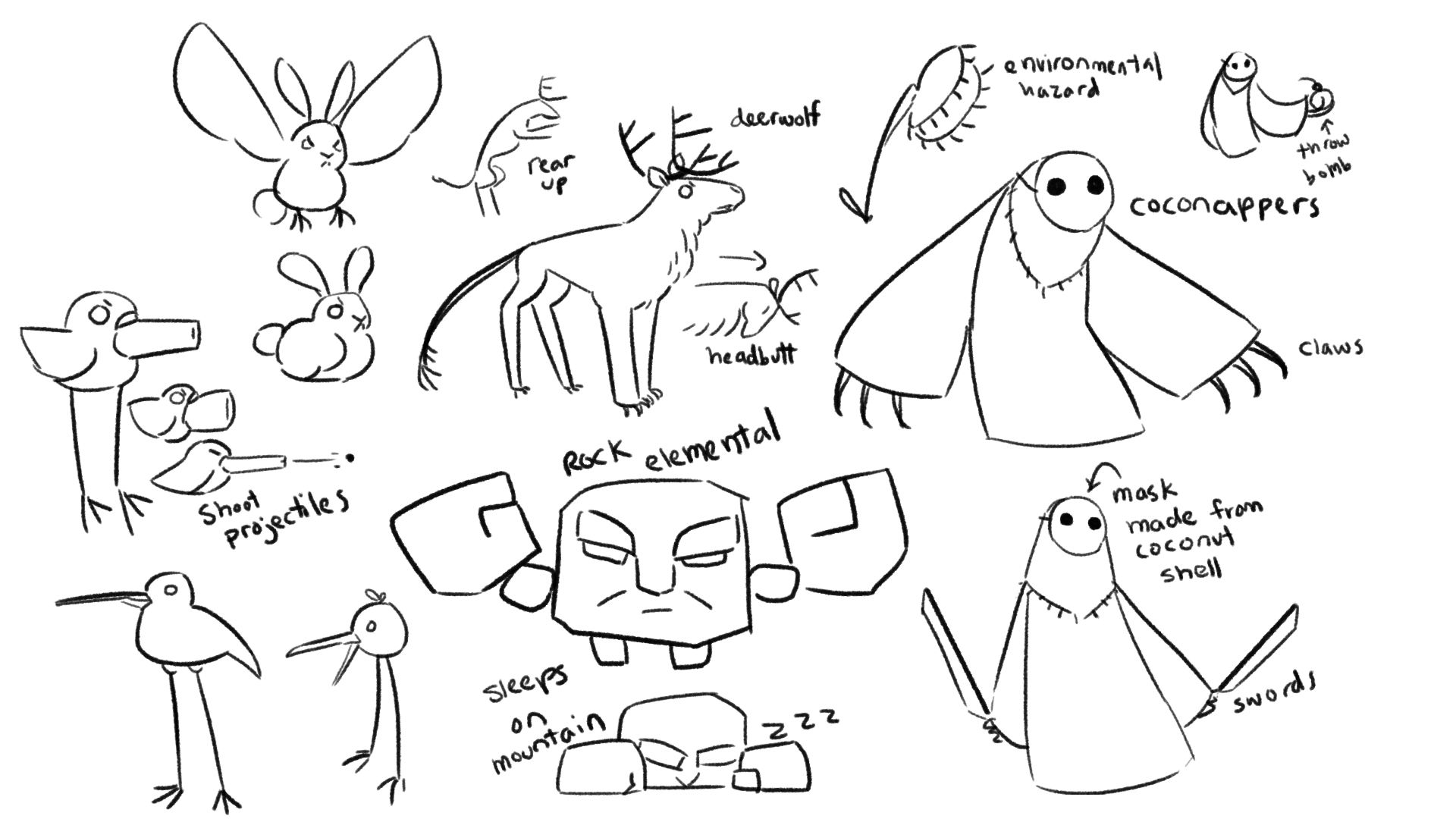The Cocoknight: A Retrospective
What is one of the coolest things that we could imagine doing? Yeah, it happened. The Make a Wish Foundation of Vermont approached us in the winter months of 2019 to make someone’s dream to make a video game come true. Larger studios had rejected their ask: making a video game is expensive, as in, really freaking expensive. But everyone at Rad Magpie was energized by the idea and we were looking to get a release under our belt. We run an incredibly lean operation and knew that we could make a great product with junior developers. We said yes. We did end up taking a financial loss at the end of the day, but - did I mention we were really excited about the project?
Meet Mika
Mika is a sassy, funny lady. She has not had an easy go in life: she’s been in the hospital twelve times in her fourteen years due to lung exacerbations and issues related to cystic fibrosis. She knew what she wanted from her game as soon as she walked through the door. Well, she had a few ideas. Choosing the initial concept was an artful juncture as it had to light her up but also be executable in a tiny development cycle: just twelve weeks.
For those of you that don’t know, yes, twelve weeks is a miniscule, itty bitty amount of time to make a game. “But it’s a whole summer!” Let me break it down for you:
That’s…
Four weeks to alpha, also known as building a working demo of every single mechanic and structure in the game. That means that we needed a playable level with enemies and a player character that are rendered in 3D with unique movement and AI behaviors; a space for said characters to move around in; a dialogue and camera system for cutscenes; triggers set up for sounds and music… and on and on and on. In four weeks.
Then four weeks to beta. At this point you’ve got a working example of everything, but we want three levels, plus a whole host of enemies, plus we’ll need actual writing to fill out all that dialogue, and voice actors have to record all that dialogue… and on and on and on. In four weeks.
Polish time! Everything works and is in the game (more or less) but it’s missing most of the stuff that makes it feel magical. It’s time for the icing on the cake. This is the stuff that makes the game feel sparkly and fun: Adding in the special lighting effects, tweaking the enemy speed and reload times, creating some cowboy hats and bowties for the coconut pets… and on and on and on. You’ve got two weeks.
Lastly, bug catchin’ time. Because making a big ol’ game in ten stinkin’ weeks means that there is definitely some weird stuff the developers will have missed or big gaping holes that the designers skipped over. Yep, just two weeks.
Dream to Reality
So, yeah, twelve weeks was a really, really short time to make the adorable, complete game that we did. We had no wiggle room, no time to really experiment, and project management had to be precise and brutal. We had some fun surprises thrown in too, like when both of the only programmers on the team lost power to their houses for over a week. (And it was Covid-time, on top of everything, so it’s not like they had an office to go to).
We managed to pull it off. We were able to do it because the structure, scope, and mechanics of the game had been designed and documented before production with the full team had even begun. Rad Magpie met with Mika and her mom Jessica for months before our June 1st start date, batting around ideas and inspiration. We nixed an earlier idea of Mika’s because the scope was too big, and ultimately landed on drawing from the style and mechanics of Minecraft: Dungeons and adding in our own embellishments and setting. I wrote up the design documentation and created the constraints that would guide the developers (including two more designers) when we began production. The documentation was about fifteen pages long and still had plenty of details to work out: the number of levels was decided but the layout of the levels were not; the overall story arc was decided and the cutscenes were storyboarded, but the dialogue and narration was not… you get the idea.
Then the team entered the mix and started the work of filling in all of the blanks and translating them from the page and into Unity. Petra Jarrett did an incredible job designing and balancing the enemies, then greyboxing all of the levels for Lillian to skin. Lillian Vinson was the only artist on the entire project, so they knew they needed to work smart: they bought assets for the environment and focused energy on creating memorable 3D characters. They worked in low-poly and worked quickly -- it’s amazing how much they were able to create. Jessica and Mika also provided concept art for most of the characters that made it into the game.
Madi Baer got to work foleying original sounds (!!) that would become enemy footsteps and guttural growls, and enlisted some voice actor friends to record narration and dialogue. Karim Elzanaty got to work coding everything and designing the enemy pathing. Anna Margotta worked with Mika to write the narrative poetry that gave the Cocoknight world all of its personality.
Then - BOOM! Game. Head to the Cocoknight website to read more about Mika and the team and to play the game. Maybe drop a comment on the itch page! We hope that you like it.






